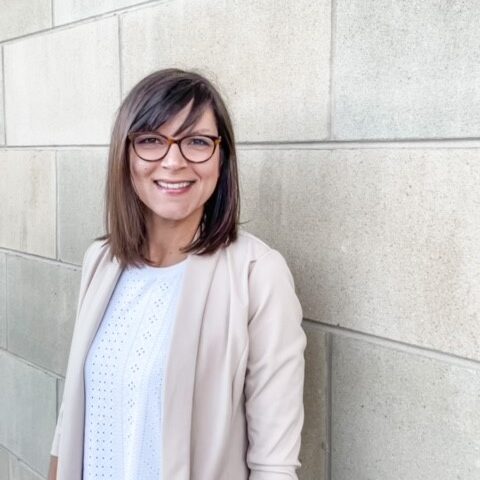Domestic Violence Across the Lifespan: Honoring Older Survivors this Domestic Violence Awareness Month
Kristin Burki, Director of the National Clearinghouse on Abuse in Later Life
October 10, 2023


Each October during Domestic Violence Awareness Month, I take time to reflect on and honor the survivors I have worked with and the lessons they taught me about what it means to be an advocate. My path in this work started over two decades ago when I embarked on my first social worker role as a domestic violence advocate and community educator. What I learned immediately was that there is no one face of domestic violence – it cuts across all demographic groups and age does not safeguard against its risks – it’s an issue that occurs across the lifespan.
I still recall one of the first women I worked with – her story represented what people typically think of when they think of domestic violence. She was a young mother, and her partner convinced her that he would gain custody of their small children if she left. He sabotaged every job she got by making sure she was late enough times to get fired. Not only did he own a firearm, he made sure she knew it.
In my work with older survivors, it became clear that whether it’s a decades-old relationship or a new one, their experience with domestic violence shares many similarities with younger people, but age creates unique challenges. The older people I talked to were still concerned about their safety; both emotional and physical. They were often more socially isolated and they feared leaving their relationship would result in further isolation and loneliness. They were still concerned about their children; this time, that they would lose those relationships because their partner had sabotaged them over time. Financially, the concerns remained, but again, were age-specific; nearing or in retirement age, older survivors who were starting over had fewer options of employment that would pay for all their expenses. When fleeing abuse, finding affordable and accessible housing quickly enough in most communities is nearly impossible.
Today, at NCALL, the National Clearinghouse on Abuse in Later Life, my mission is to support communities where people can age with the safety and dignity they deserve. NCALL’s work addresses the intersection of domestic and sexual violence and elder abuse through providing training and resources to professionals and communities across the country. It’s crucial to emphasize the connection between elder abuse and domestic violence because while domestic violence transcends age, most interventions, research, and prevention initiatives tend to concentrate on younger adults. Consequently, domestic violence experienced by older adults is overlooked and ignored. It’s not surprising, then, that many older survivors do not believe domestic violence programs are appropriate for them, which limits their access to these important services. At the same time, elder abuse services and responses don’t always focus on intimate partners as perpetrators, or account for the coercive and controlling dynamic that is domestic violence. This presents a key gap in these fields, as a significant portion of elder abuse involves female victims with spouses as perpetrators.
Addressing domestic violence in later life requires collaboration between the fields of domestic violence victim services and elder justice to effectively support older survivors with their distinct needs. Further, we must do so in ways that account for not only a survivor’s age, but also how age intersects with other backgrounds and identities, such as race and ethnicity, faith affiliation, income level, education level, and ability status. “One size fits all” approaches ignore the unique barriers to safety and leave too many older adults vulnerable to being unseen or dismissed. Intersectional approaches include outreach, services, collaboration, and policies responsive to an older adult’s identity and experience.
This Domestic Violence Awareness Month, let’s ensure that older adults remain visible in our efforts to address and end domestic violence and elder abuse.
Takeaways for Supporting Survivors
- Believe survivors: practice with a survivor-centered approach
- Support the survivor in making informed choices that restore their sense of autonomy
- Safety plan in ways that account for the older adults’ experiences, concerns, and fears
- Age relevant, community-based and culturally responsive collaborations are key to effectively serving older survivors
As you plan for Domestic Violence Awareness Month, please see the following resources:
- NCALL graphics
- Domestic Violence Awareness Project (promo materials)
- National Domestic Violence Hotline (facts, statistics, and impact reports)
- National Network to End Domestic Violence (campaign materials)
- Domestic Violence Across the Lifespan: Supporting Older Survivors (video)
- Intimate Partner Violence in Later Life (video)
- YouTube videos of survivors: Donna, Mary Lou, Tammy
- “Bringing Together Faith and Safety for Older Adults” Version 1 | Version 2
- Visit NCALL online to find additional information and resources and please reach out at ncall@ncall.us with any questions.
